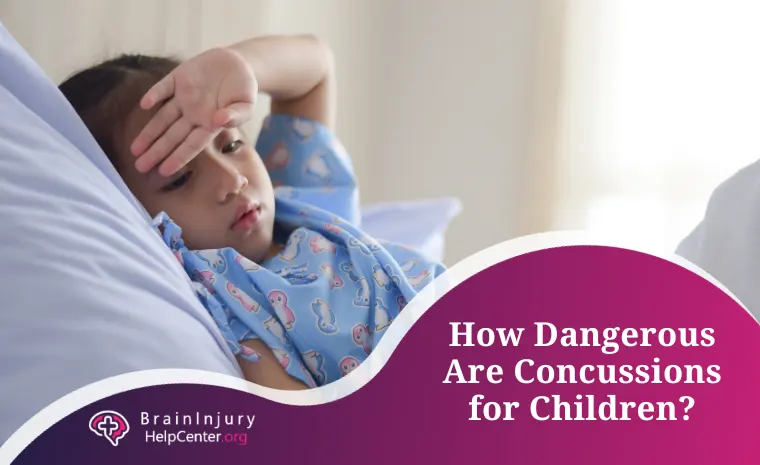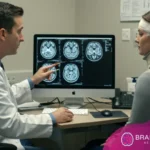Awareness surrounding the dangers of concussions for children has significantly increased. While often linked to contact sports, these injuries can occur anywhere, from playgrounds to schools. Parents, educators, and caregivers must comprehend the potential risks and impacts on a child’s cognitive function, behavior, and overall quality of life.
In California, the rising prevalence of pediatric concussions is alarming, especially among school-age children engaged in sports activities. Understanding the risks and legal considerations associated with childhood concussions is vital. This blog explores how dangerous are concussions for children, the differences between concussions and other head injuries, the signs and symptoms of concussions in children, the short and long-term impacts, and the process of filing a claim for a negligent concussion.
Distinguishing Concussions from Other Head Injuries
Concussions and other head injuries are distinct categories of traumatic brain injuries, each with unique characteristics:
- Risk Factors: Concussions typically result from sudden impacts during physical activity, while other head injuries can stem from falls, accidents, or repetitive trauma.
- Severity: Concussions are often mild traumatic brain injuries, with temporary disruptions, while other head injuries can range from mild to severe, like loss of consciousness or blurry vision.
- Diagnostic Challenges: Symptoms of a concussion may not show on imaging tests, requiring clinical evaluation. Other head injuries often present structural damage more definitively.
- Recovery Period: Concussion symptoms are usually temporary, with most recovering fully within weeks of the initial injury. Other head injuries may necessitate extensive rehabilitation.
- Long-Term Effects: While most individuals recover from the effects of concussion, some may experience persistent symptoms. Other head injuries can have more pronounced and lasting consequences on cognitive activity.

Recognizing Concussion Symptoms in Children
Recognizing signs and symptoms of concussion in children is vital for prompt intervention. Common danger signs include headaches, nausea, balance issues, dizziness, fatigue, changes in sleep patterns, sensitivity to light and noise, cognitive impairments, irritability, slurred speech, and seizures. Parents, caregivers, and educators must be vigilant and seek medical attention promptly.
Long-Term Impact of Concussions on Children
The danger of concussions for children is significant, and they can have lasting cognitive effects. These effects encompass memory impairment, attention difficulties, processing speed reduction, executive functioning challenges, language issues, academic and learning difficulties, emotional and behavioral changes, fatigue, social implications, school performance decline, persistent headaches, and an increased risk of anxiety and depression.
Filing a Claim for a Negligent Concussion
- Seek Medical Attention: Timely medical attention ensures the well-being of the child by identifying and addressing any potential health issues resulting from the concussion. Additionally, seeking prompt medical care establishes a clear link between the injury and its negligent cause, which is vital for building a strong legal case. Medical records serve as essential evidence in proving the extent of the injury and the associated damages.
- Document the Incident: Documentation is key to establishing a factual account of the incident. Photographs, witness statements, and other relevant evidence help provide the detailed circumstances around the concussion. This not only strengthens the case but also serves as a valuable resource during negotiations or trials. Thorough documentation can demonstrate the liability of the responsible party and illustrate the impact of the concussion on the child’s life.
- Consult with an Attorney: Seeking legal guidance is crucial to navigate the complexities of personal injury law, especially with cases involving children. An experienced attorney can assess the strength of your claim, identify liable parties, and guide you through the legal process. Consulting with an attorney early in the process enhances the chances of a successful resolution and ensures that all necessary legal steps are taken.
- Insurance Handling: Dealing with the responsible party’s insurance company is a critical step. Providing medical records to your attorney allows for informed negotiations with the insurance company. This way, the attorney works as an advocate, presenting evidence and arguments to support the claim and negotiating a settlement that covers the physical, emotional, and financial consequences of the injury.
- Mediation or Trial: Mediation provides an opportunity to resolve the dispute with the help of a neutral third party. It’s a less adversarial and more collaborative approach, but if mediation proves unsuccessful, a trial becomes necessary. In a trial, the outcome is determined by a judge or jury, who considers the presented evidence and arguments to make a final decision on liability and compensation.
Brain Injury Help Center is Here
Understanding how dangerous are concussions for children lives and seeking legal assistance can be overwhelming. The Brain Injury Help Center in California offers support, information, and aid to individuals dealing with traumatic brain injuries and their families. For a free consultation, contact us at (866) 576-0936.
Awareness of the dangers of concussions in children is crucial. By understanding the differences, recognizing symptoms, acknowledging long-term impacts, and following appropriate legal steps, parents can ensure the well-being of their children and seek justice when needed.









